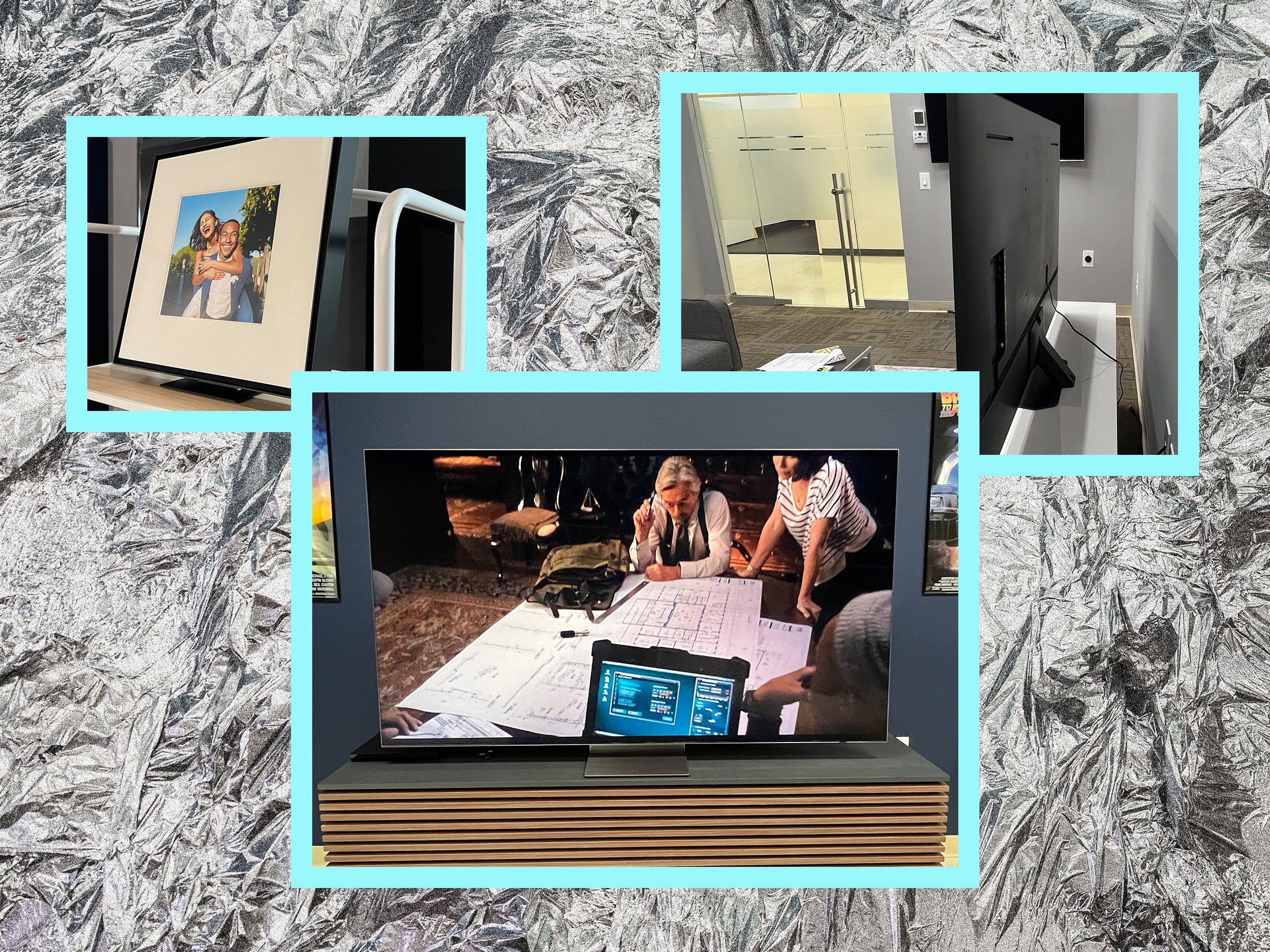
In Short
- Introduction of samsung’s new oled display and music frame speakers.
- Insights into the tv review and advanced screen technologies.
- Overview of samsung’s innovative strides in audiovisual experiences.
TFD – Dive into the world of cutting-edge technology with Samsung’s new OLED display and impressive Music Frame speakers, promising an immersive audiovisual experience. Stay updated with our comprehensive TV review and technological insights.
Spring is in the air, and that means the fresh crop of 2024 TVs are getting ready to make their way out of the lab and into living rooms. In anticipation, Samsung offered reviewers like me an early look at some of its biggest models ahead of official release, including the new S95D QD-OLED, the QN900D 8K QLED, and the brand’s flagship 4K QLED TV, the QN90D. We also got a chance to sample the new Music Frame speaker, a sort of sonic counterpart to Samsung’s Frame TVs.
Here are a few things to consider before getting started. First off, I wasn’t given much time or money to work with these TVs, and the versions we saw weren’t ready-to-ship production models, so there will probably be additional adjustments made before they are placed on store shelves. In addition, there were unanticipated performance obstacles during my test time due to local internet disruptions at Samsung’s New Jersey factory.
I left the event with more questions than answers, as usual, especially in light of the previously mentioned issues. However, that’s part of what makes this time of year so fascinating. Here are some initial observations about some of the largest and brightest new TVs from Samsung.
Is it better to glare or not? It appears that the developers at Samsung posed this query before to integrating their fascinating new Glare-Free screen technology into the company’s flagship S95D quantum-dot OLED TV. The S95D’s new matte-black screen, which borrows an anti-glare approach from Samsung’s painting-like TV series The Frame, is the largest update to the company’s top OLED in three years.
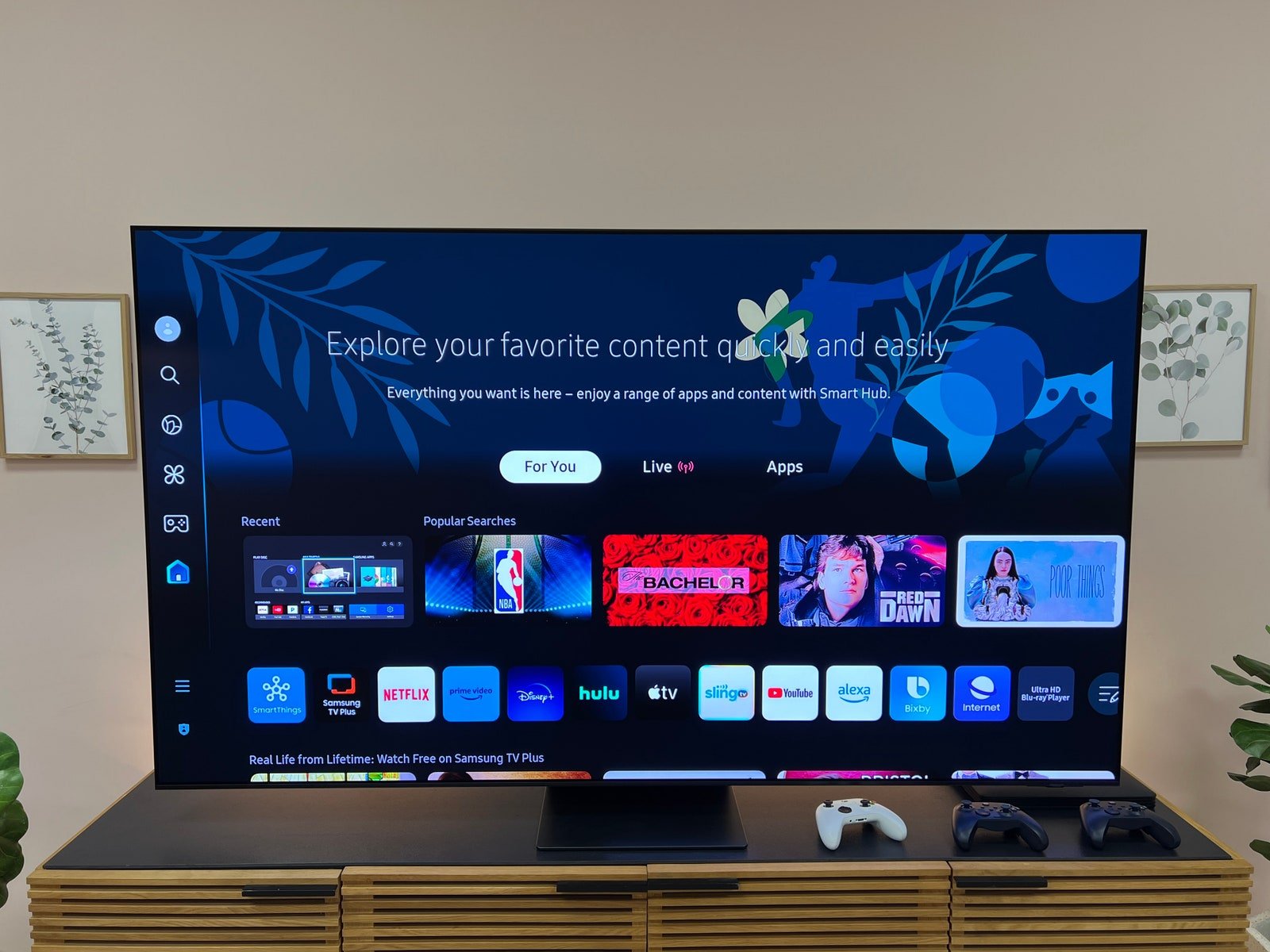
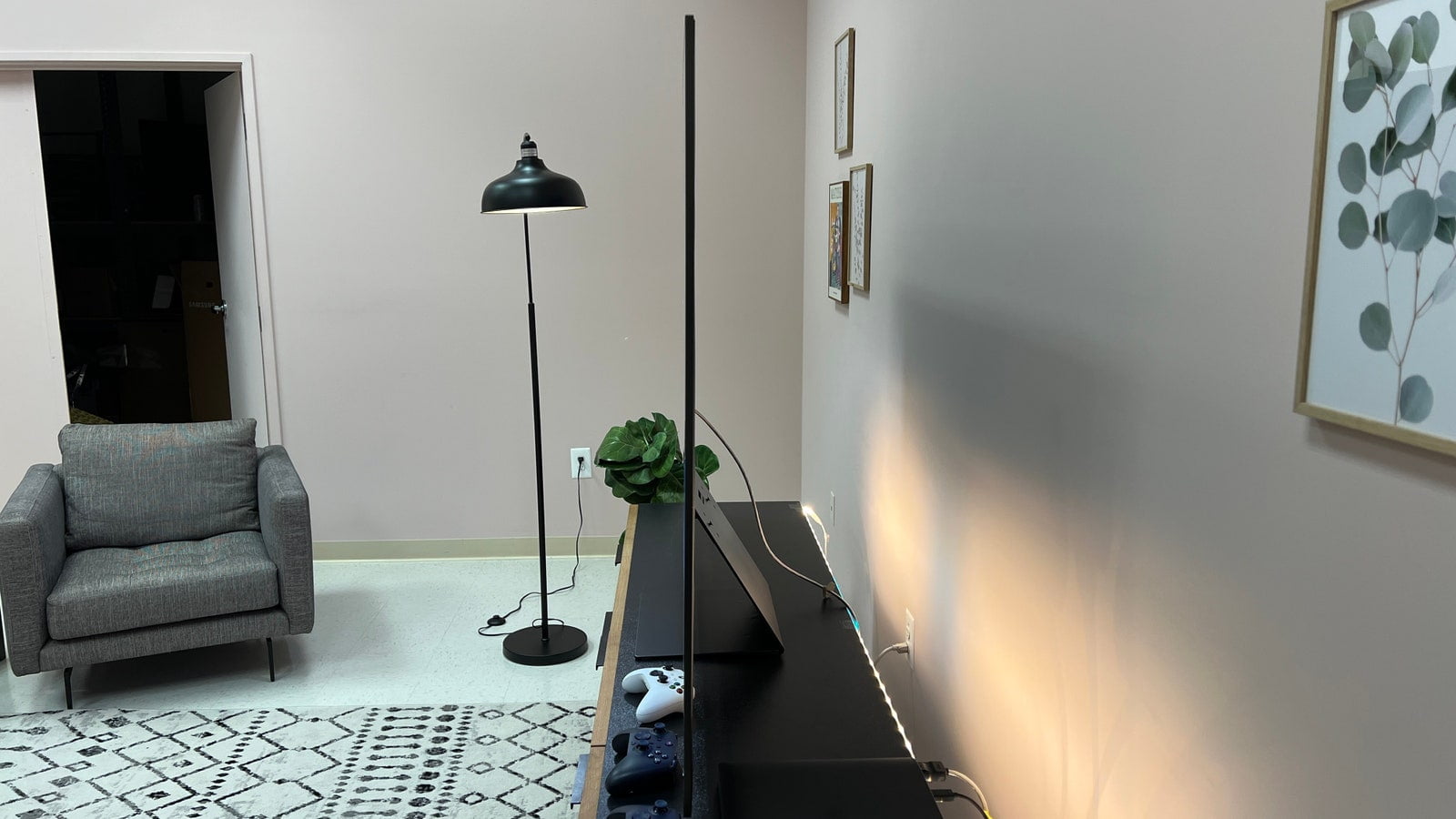

A massive overhanging lamp that bent toward the powdered screen’s surface to demonstrate the enhanced glare-reduction capabilities was the focal point of the TV’s presentation room. The white light faded to a gentle glow that almost vanished, reminiscent of the flashlight beams that ran over the golden Sphere in the 1990s Michael Crichton picture, which is unfairly overlooked. The 8K QLED TVs from Samsung, which employ a unique coating to improve their viewing angle and provide a striking rainbow reflection when lit from above, seem to be mocked by the new design.
In comparison, there appears to be a little decrease with the S95D’s reduction of reflectivity. Even with a discernible increase in peak brightness over previous year, the non-glossy backdrop of the TV seemed to lessen some of the spacey depth and “pop” of its predecessor during the few hours I used it. Subtitles and other white images appeared enhanced. I didn’t notice any contrast loss with the lights down, as the TV’s vivid colors, deep black levels, and luminous spectral highlights—like the searing disc of the Mandalorian’s helmet light in “The Mines of Mandalor”—all pointed to fabulous performance.
The TV’s design is as amazing; it features an ultrathin 11-mm display, the same One-Connect box for inputs and power as last year, and a pedestal stand. Who doesn’t adore matte black, really? The glare-free technology is not available for the S90D step-down model. I’m interested in comparing the two models in real-world viewing because I frequently watch TV at an angle with numerous lamps on to determine whether the new glare-free technology feels like a worthwhile upgrade.
It’s not surprising that Samsung’s most expensive 8K model, which has always been extremely expensive, is still the company’s best QLED TV. With its amazing brightness, superb black levels, rich and captivating quantum dot colors, and crystalline picture processing that appears especially striking on the 75-inch size I got to play with, the QN900D is once again a stunner.
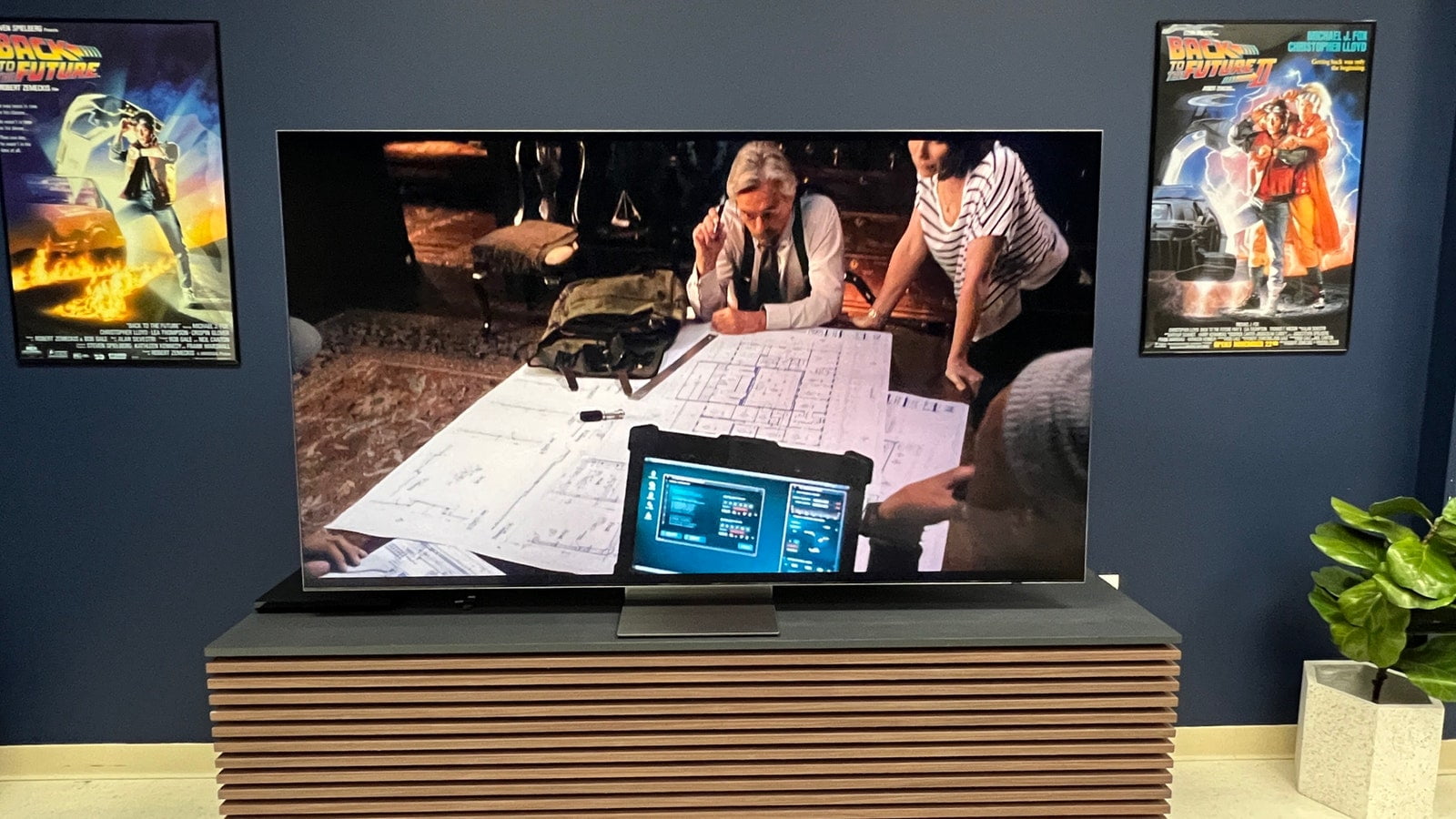
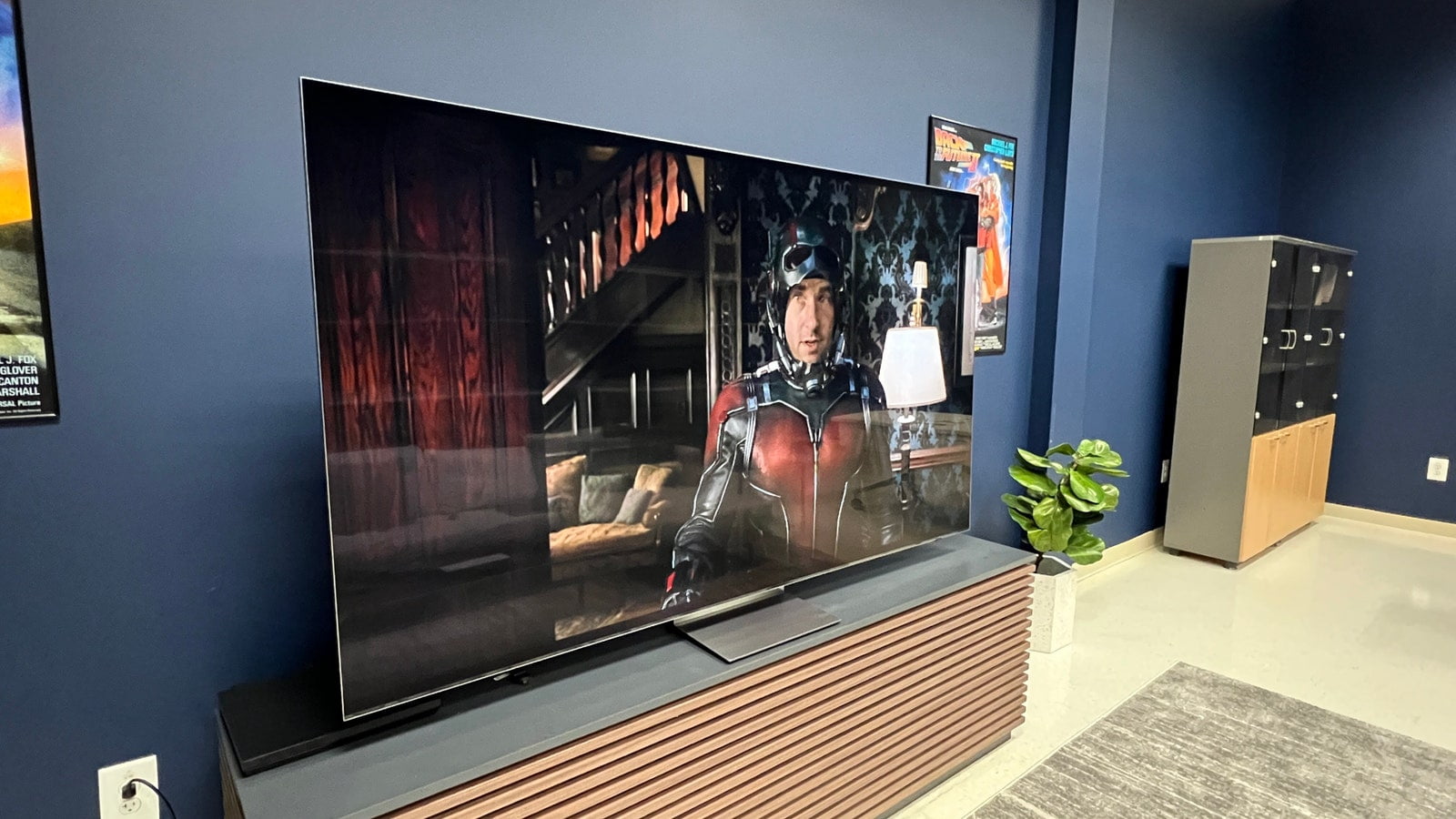
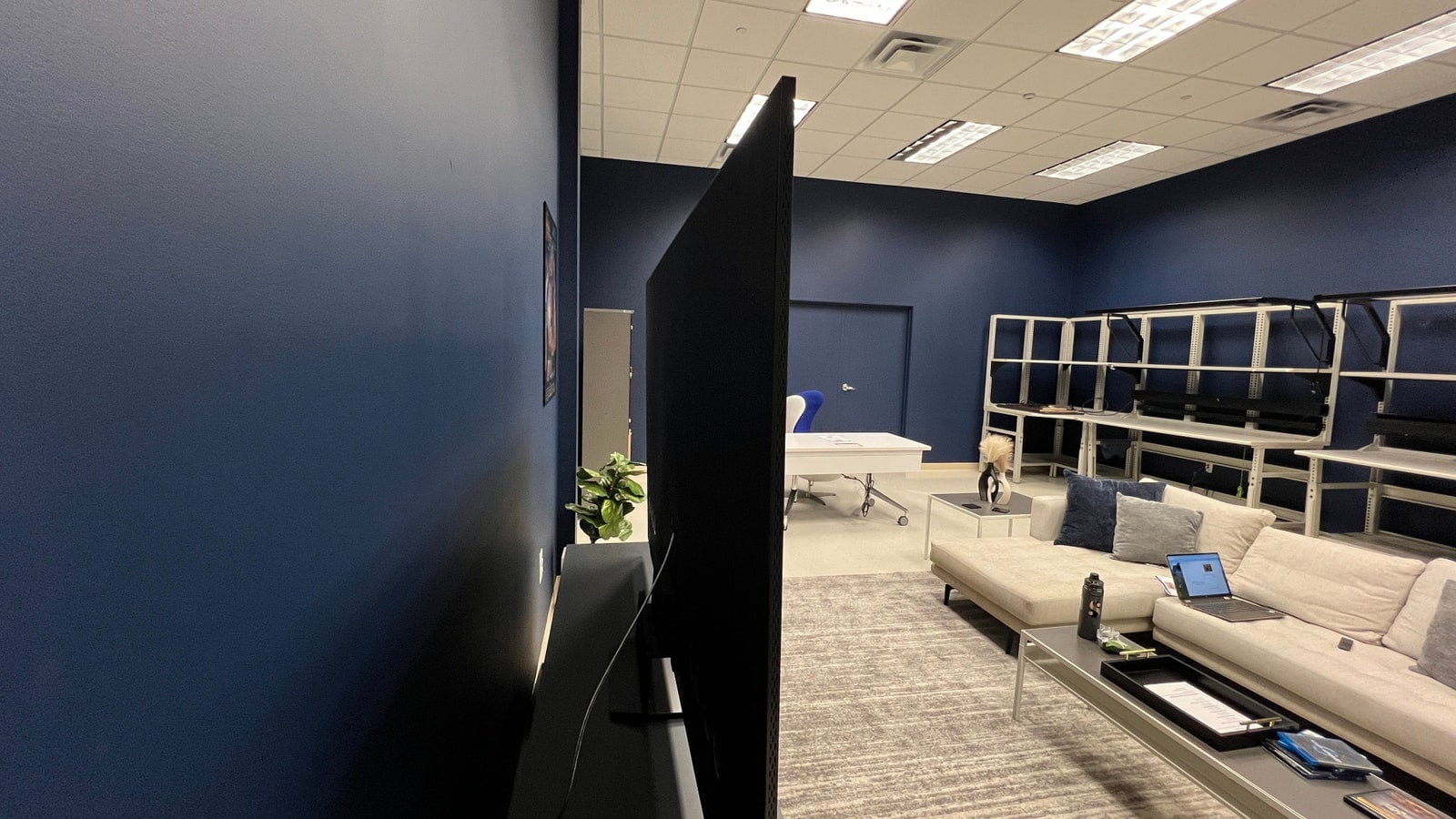
The TV’s new NQ8 AI Gen3 processor, which Samsung claims is twice as fast as the chip from last year, is the most anticipated upgrade this year. It will improve the upscaling of lower-resolution images and assist achieve even more flawless picture processing. Considering the immersive clarity of the QN900C (8/10, WIRED Recommends), I’m not sure the processor needs much work, but I’m not grumbling either. Along with its ultraslim bezels and latticed metal trim, the newest model now has a stylish new Infinity Air Stand that enhances the “floating screen” impression.
Additional upgrades include a new AI Motion Enhancer Pro that uses AI to lessen blur around the ball, puck, or, I guess, javel? It can recognize the sport you’re viewing. I was unable to test it because streaming content was restricted by Samsung’s unannounced Wi-Fi shutdown and there was no available cable connection. I was also unable to test any 8K content because of this. The fact that there is still not much available elsewhere is the other factor.
One of my few criticisms of the QN900C was its lack of 8K content. Another was the screen’s rainbow reflection from overhead lighting, which will again be a problem for people who have recessed lighting. Those, in my opinion, are still the new TV’s primary shortcomings. The price reduction over the last few model years was my main expectation for the QN900D this year. That did not occur, but the QN900D would undoubtedly satisfy you if you have the money.
When I tried the most recent iteration of Samsung’s 4K QLED flagship, the QN90D, its internet problems appeared to combine with a few other flaws. The demo model seemed to have problems with local dimming and banding when streaming content on my first testing day; this resulted in some haze surrounding the content, some of which even spilled into the lower letterbox. For the first few minutes, it was also (frustratingly) locked in the Standard picture setting.
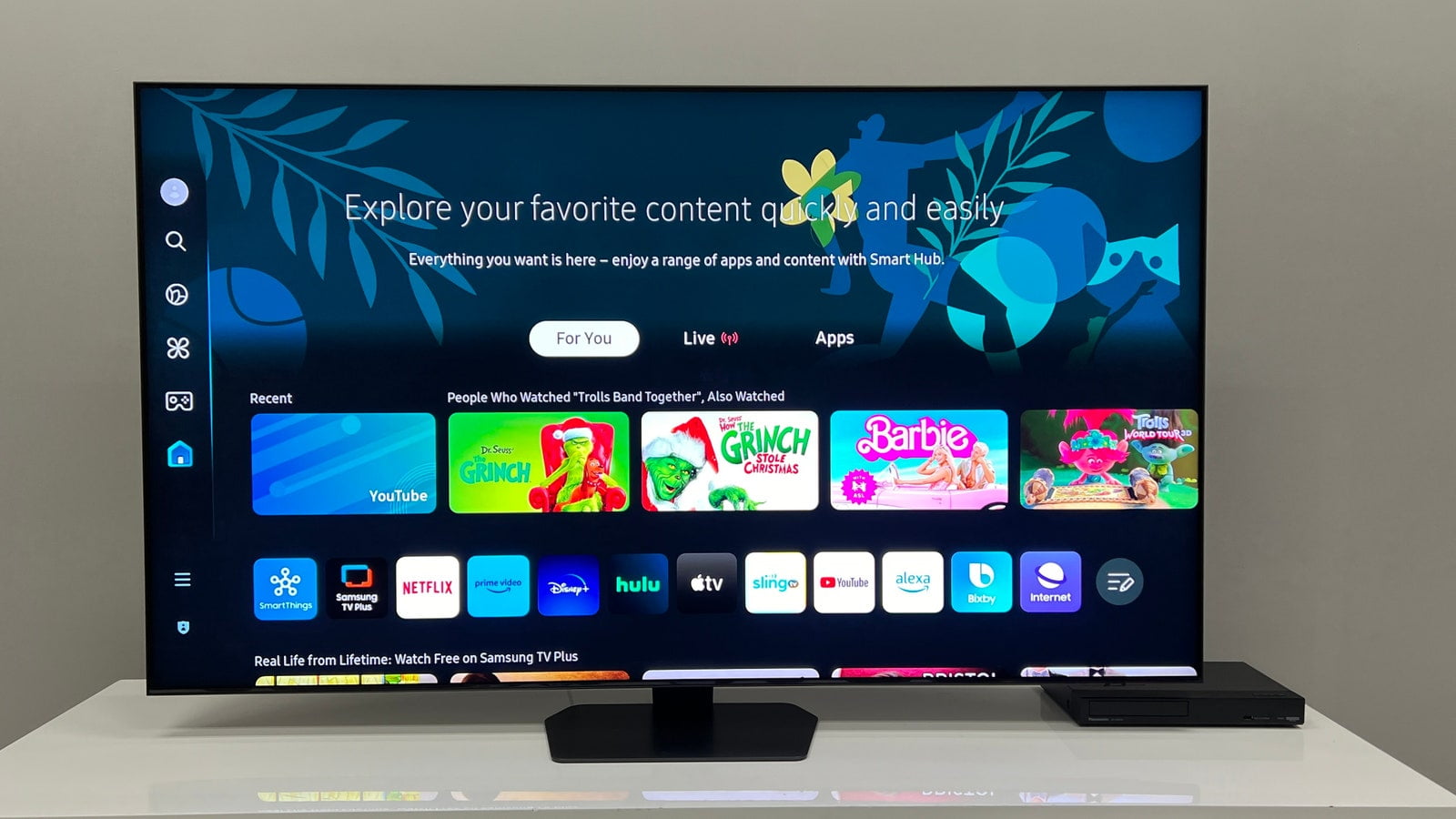
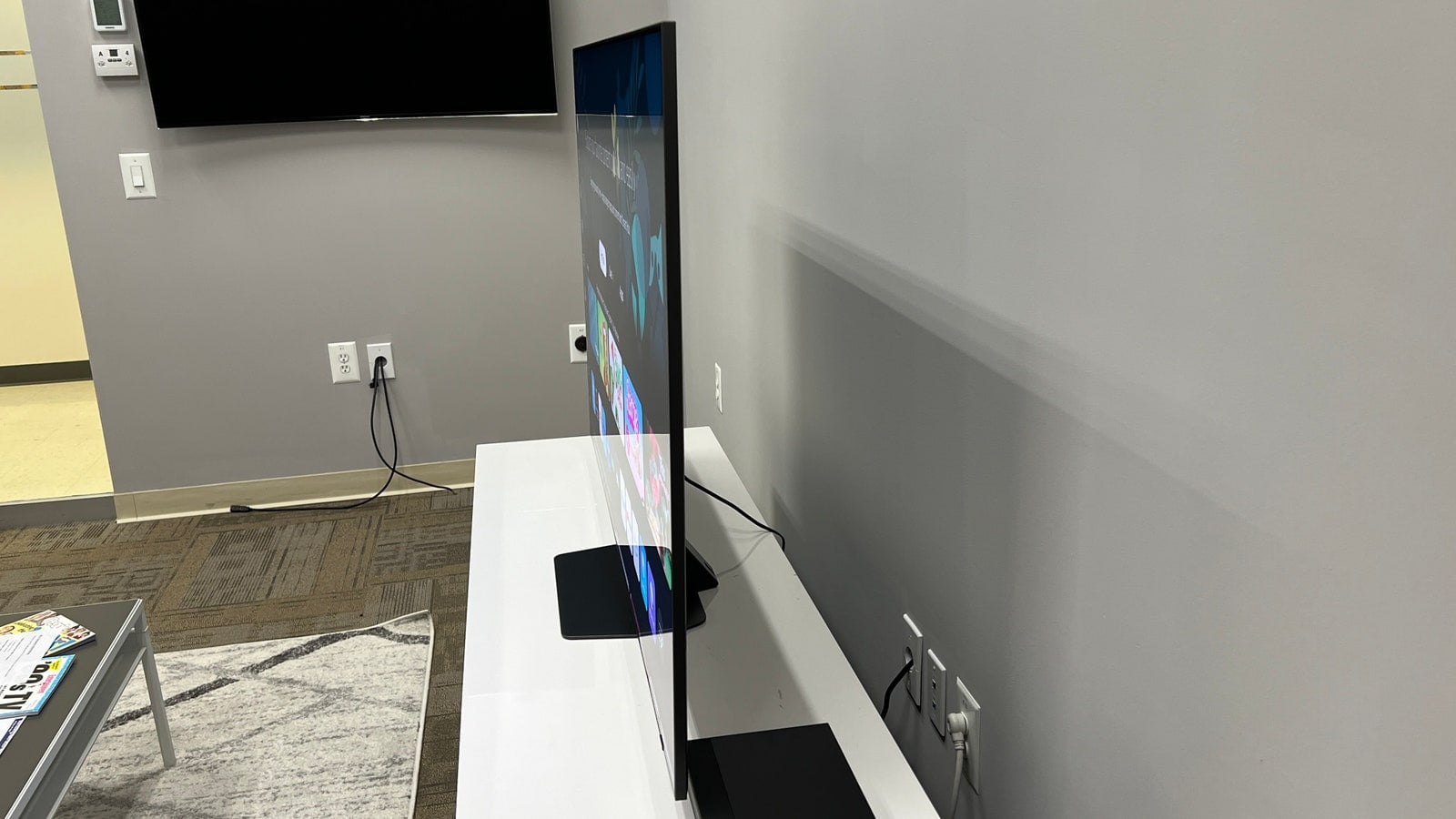
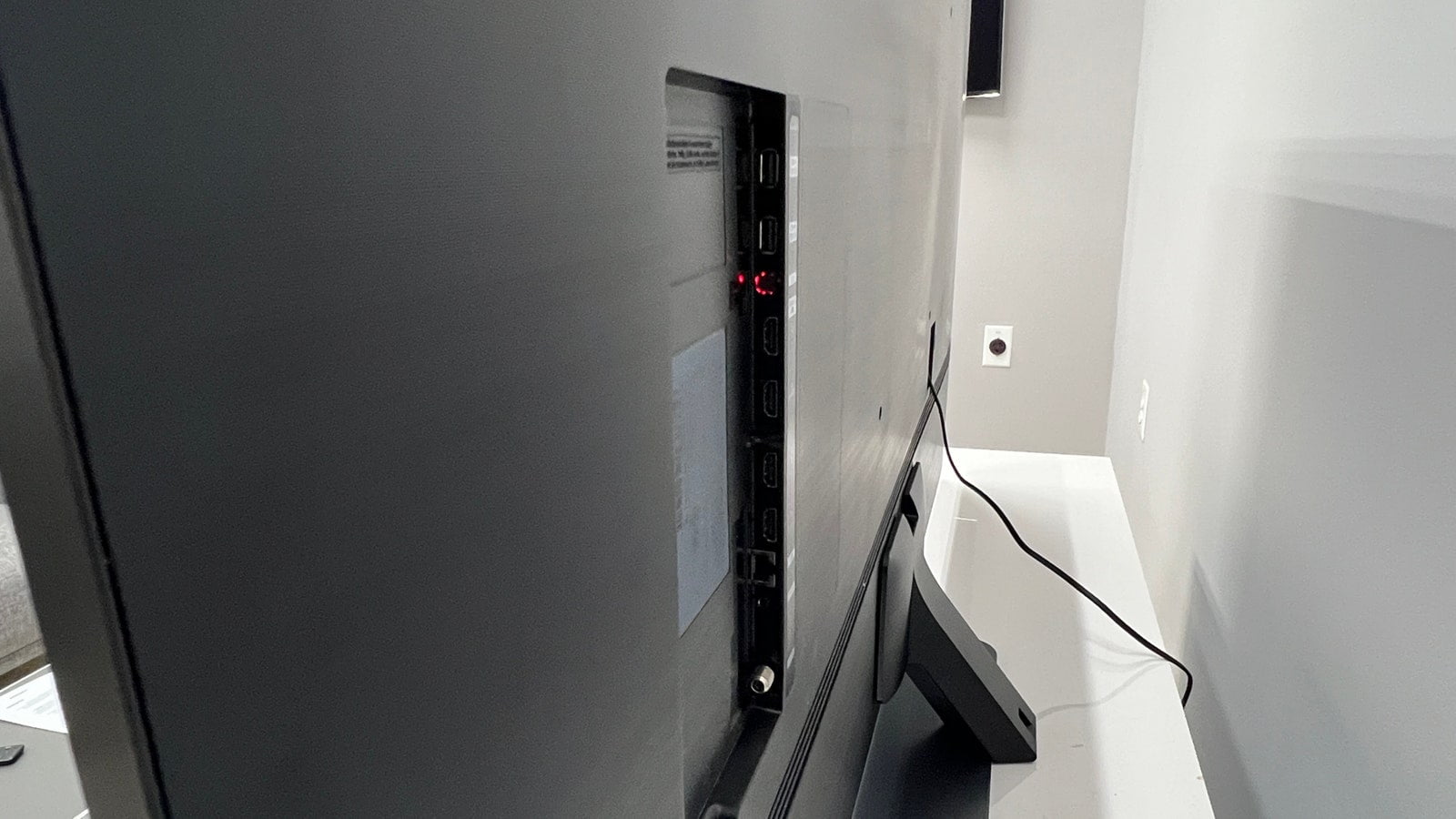
When I came back the following day, the most obvious problems had disappeared, but I was certain that I wasn’t seeing the whole picture (literally) because of the TV’s poor black levels and lack of contrast in comparison to last year’s superb QN90C (8/10, WIRED Recommends). When they saw the TV earlier this month, a few coworkers also commented on how wonderful it looked. I’m delaying making a decision until after the complete review.
All I can say is that the TV demonstrated the same superior off-axis viewing that set its predecessor apart from a number of backlit LED and QLED TVs, and when the final version is released, I anticipate it will be a strong competitor in its class once more. Samsung still has its job cut out for it this year, though, since rivals are making bold claims like substantial improvements to less expensive models like the TCL QM8 and Hisense U8N, which double or more their peak brightness compared to the previous year. In 2024, there ought to be an interesting QLED showdown.
Samsung’s Frame TVs have always prioritized design over functionality, yet providing enough 4K clarity to be a well-liked mainstay. The new Music Frame speakers are an intriguing addition to the party because of this. They can be used as wireless speakers on their own or as Q-Symphony extensions for Samsung TVs and soundbars. Since CES 2024, we’ve been wondering if they sound nice.
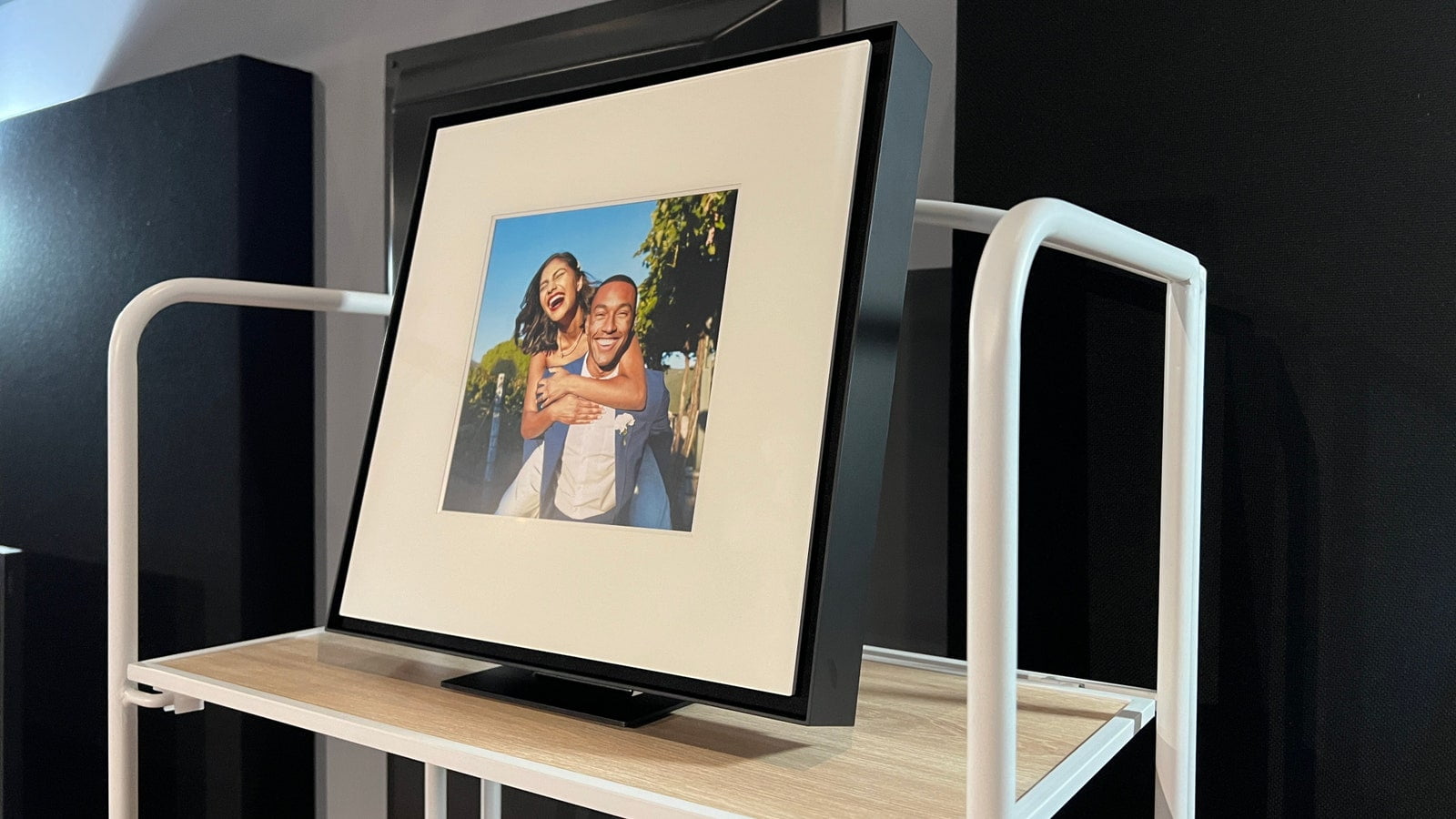
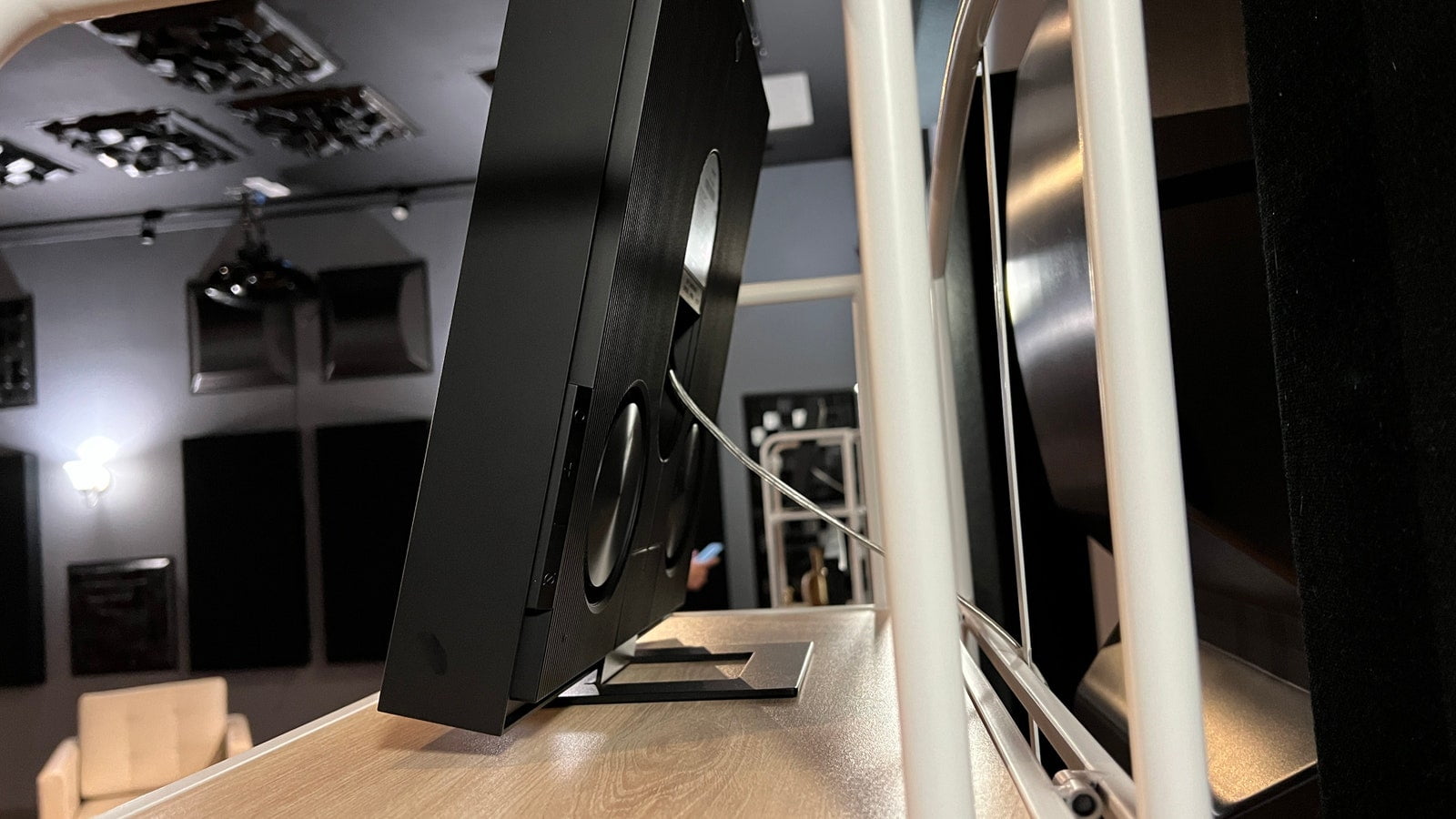
In my short time with two of them, the answer is—quite surprisingly—yes. The music has body and punch from the two woofers positioned along the back panel’s robust bass section, and the midrange and treble drivers are engaging and clear enough, if not flawless. That’s better than you might anticipate from picture frames, which have tiny creases along their sides that allow sound to escape.
We were only able to hear the Music Frames in their original configuration, which allowed their sound to more freely spread out in the lower frequencies. The frames can be wall mounted or placed on stands. Nevertheless, their distinct and approachable sound left me impressed, and I’m eager to hear more.
Conclusion
Samsung’s new OLED display and Music Frame speakers represent significant advancements in audiovisual technology, promising enhanced user experiences and immersive entertainment. As Samsung continues to innovate, the future of home entertainment looks brighter and more captivating than ever before.
Connect with us for the Latest, Current, and Breaking News news updates and videos from thefoxdaily.com. The most recent news in the United States, around the world , in business, opinion, technology, politics, and sports, follow Thefoxdaily on X, Facebook, and Instagram .
